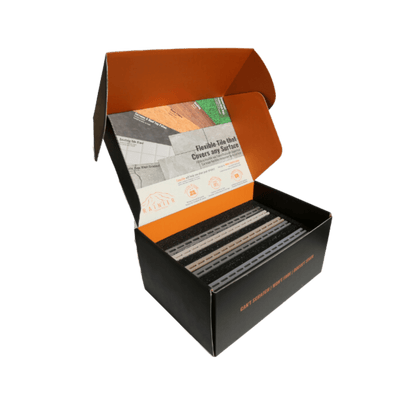Paver stones are a popular choice for patios, driveways, walkways, and other outdoor spaces due to their durability, versatility, and aesthetic appeal. However, over time, these stones can accumulate stains and debris, with one of the most stubborn being grease. Whether it’s from a spilled barbecue sauce, cooking oil, or automotive fluids, grease stains can mar the appearance of your beautiful paver stones. Fortunately, removing grease from paver stones is possible, and with the right approach, you can restore the natural look of your hardscaping.
In this article, we’ll explore the steps and methods you can use to effectively remove grease stains from paver stones, ensuring your outdoor space looks as good as new.
Read more: how to install paving stones in grass
Understanding Grease Stains
Before diving into the cleaning process, it’s important to understand why grease stains are so difficult to remove. Grease is made up of oils and fats that are hydrophobic, meaning they repel water. This makes it difficult for water alone to break down the stain. Additionally, the porous nature of paver stones, particularly those made from concrete or natural stone, can cause grease to seep into the surface, further embedding the stain.
The good news is that there are various cleaning methods, both natural and chemical, that can tackle grease stains effectively without causing harm to your paver stones.
Read more: how to paint paving stones
1. Using Dish Soap and Warm Water
For minor grease stains, a simple solution of dish soap and warm water can be surprisingly effective. Dish soap is designed to break down oils and fats, making it an excellent first step in tackling grease stains.
Steps to follow:
-
Prepare the Cleaning Solution: Mix about a tablespoon of dish soap with two cups of warm water in a bucket. Stir the solution to ensure the soap is fully dissolved.
-
Apply to the Stain: Using a sponge, rag, or soft brush, apply the soapy water directly onto the grease stain. Let the solution sit for about 15 to 20 minutes to allow the soap to break down the oils.
-
Scrub the Area: After the solution has had time to work, use a scrub brush (preferably with stiff bristles) to scrub the affected area in a circular motion. This will help lift the grease from the surface of the paver stone.
-
Rinse Thoroughly: Once you’ve scrubbed the stain, rinse the area with clean water. You can use a garden hose or a bucket of water to wash away any residue from the dish soap.
-
Repeat if Necessary: For stubborn stains, you may need to repeat this process one or two more times until the grease is fully removed.
This method works well for fresh stains or those that haven't seeped deeply into the stone. It’s a gentle approach that won’t damage your pavers.
Read more: How to lay paving stones
2. Baking Soda and Water Paste
Baking soda is another household item that works wonders for grease stains. Its abrasive texture helps to scrub away grease, and its absorbent properties can help lift oils from porous surfaces like paver stones.
Steps to follow:
-
Make a Baking Soda Paste: Mix baking soda with a small amount of water to form a thick paste. You want the paste to be spreadable but not too runny.
-
Apply the Paste to the Stain: Spread the paste generously over the grease stain. Ensure that the paste covers the entire stained area.
-
Let It Sit: Allow the paste to sit on the stain for at least 30 minutes, or even up to an hour, so the baking soda can absorb the grease.
-
Scrub the Area: After the paste has had time to absorb the grease, use a scrub brush to work it into the paver stone. The abrasive nature of the baking soda will help lift the stain.
-
Rinse Thoroughly: Rinse the area with clean water to remove any residue from the baking soda. If necessary, repeat the process for stubborn stains.
This method is effective for removing both fresh and slightly older grease stains. Baking soda is a great alternative for those who prefer natural cleaning solutions.
Read more: How to Remove Rust from Paver Stones
3. Poultice Method for Deep Stains
If the grease stain has been sitting for a long time or has deeply penetrated the paver stone, you may need to use a poultice method. A poultice is a paste made of a substance that can absorb and lift the stain from porous materials like pavers. You can create a poultice using materials like baking soda, powdered laundry detergent, or even cat litter, combined with a liquid like water or a solvent.
Steps to follow:
-
Create the Poultice: Mix a powdered absorbent material (such as baking soda or powdered laundry detergent) with a liquid (like water, vinegar, or a degreaser). The consistency should be thick, like a paste.
-
Apply the Poultice: Spread the poultice over the grease stain, making sure to cover it completely. The poultice should be thick enough to stick to the stone surface and not run off.
-
Cover with Plastic Wrap: After applying the poultice, cover the area with plastic wrap to keep the paste from drying out too quickly. This helps the paste stay moist and absorb the grease over time.
-
Let It Sit: Allow the poultice to sit for 24 to 48 hours, depending on the severity of the stain. During this time, the poultice will work to draw out the grease from the paver stone.
-
Remove and Scrub: Once the poultice has dried, carefully remove the plastic wrap and scrape off the paste. Use a scrub brush to remove any remaining residue and rinse the area with clean water.
The poultice method is particularly effective for deep, ingrained grease stains that haven’t responded well to surface cleaning techniques.
Read more: How to Calculate How Many Paver Stones You Need for Your Project
4. Commercial Degreasers
If natural methods don’t seem to be cutting it, you can turn to commercial degreasers designed specifically for outdoor cleaning. These products are formulated to break down oils and grease, making them an excellent choice for tough stains.
Steps to follow:
-
Choose a Suitable Degreaser: Look for a degreaser that is safe for use on stone or concrete surfaces. Many outdoor cleaning products are designed for paver stones and won’t harm the surface. Be sure to read the label for compatibility.
-
Apply the Degreaser: Follow the manufacturer’s instructions for applying the degreaser. Typically, this involves spraying the product directly onto the grease stain and letting it sit for a specified period.
-
Scrub the Area: Use a stiff-bristled brush to scrub the affected area. The degreaser should break down the grease, making it easier to lift off the paver stones.
-
Rinse Thoroughly: Once the stain has been removed, rinse the area thoroughly with clean water to remove any residual cleaning product.
While commercial degreasers are effective, they should be used with caution. Always follow the manufacturer's instructions to avoid damaging your pavers.
5. Power Washing
For large areas or particularly stubborn grease stains, power washing can be an effective solution. The high-pressure water stream can dislodge grease and grime from paver stones. However, power washing should be used carefully, as it can damage the surface if not done correctly.
Steps to follow:
-
Prepare the Area: Remove any debris or loose dirt from the area around the grease stain. Ensure that the power washer is set to a lower pressure setting to avoid damaging the pavers.
-
Apply Detergent (Optional): Some power washers have a detergent option that can be used to apply a cleaner to the stained area. This can help break down the grease further before rinsing with water.
-
Power Wash the Stain: Hold the power washer nozzle about 6 to 12 inches away from the stain and use a sweeping motion to wash away the grease. Avoid holding the nozzle too close to the paver surface, as this can cause damage.
-
Rinse the Area: After power washing, rinse the area with clean water to ensure all detergent and grease residue is removed.
Power washing is a fast and effective way to clean large areas, but it should be used as a last resort due to the potential for damage.
Read more: How to Cut Paver Stones with a Circular Saw
Preventing Future Grease Stains
Once you’ve successfully removed the grease from your paver stones, it’s a good idea to take steps to prevent future stains. You can apply a sealant to your pavers, which will help repel liquids, including grease. Additionally, prompt cleanup of any spills or stains can prevent them from becoming ingrained in the paver surface.
Removing grease from paver stones may seem like a daunting task, but with the right methods, it’s entirely achievable. Whether you opt for natural solutions like dish soap and baking soda or turn to commercial degreasers, there’s a technique to suit every type of stain. By following these steps and maintaining your pavers, you can keep your outdoor spaces looking pristine and beautiful for years to come.






